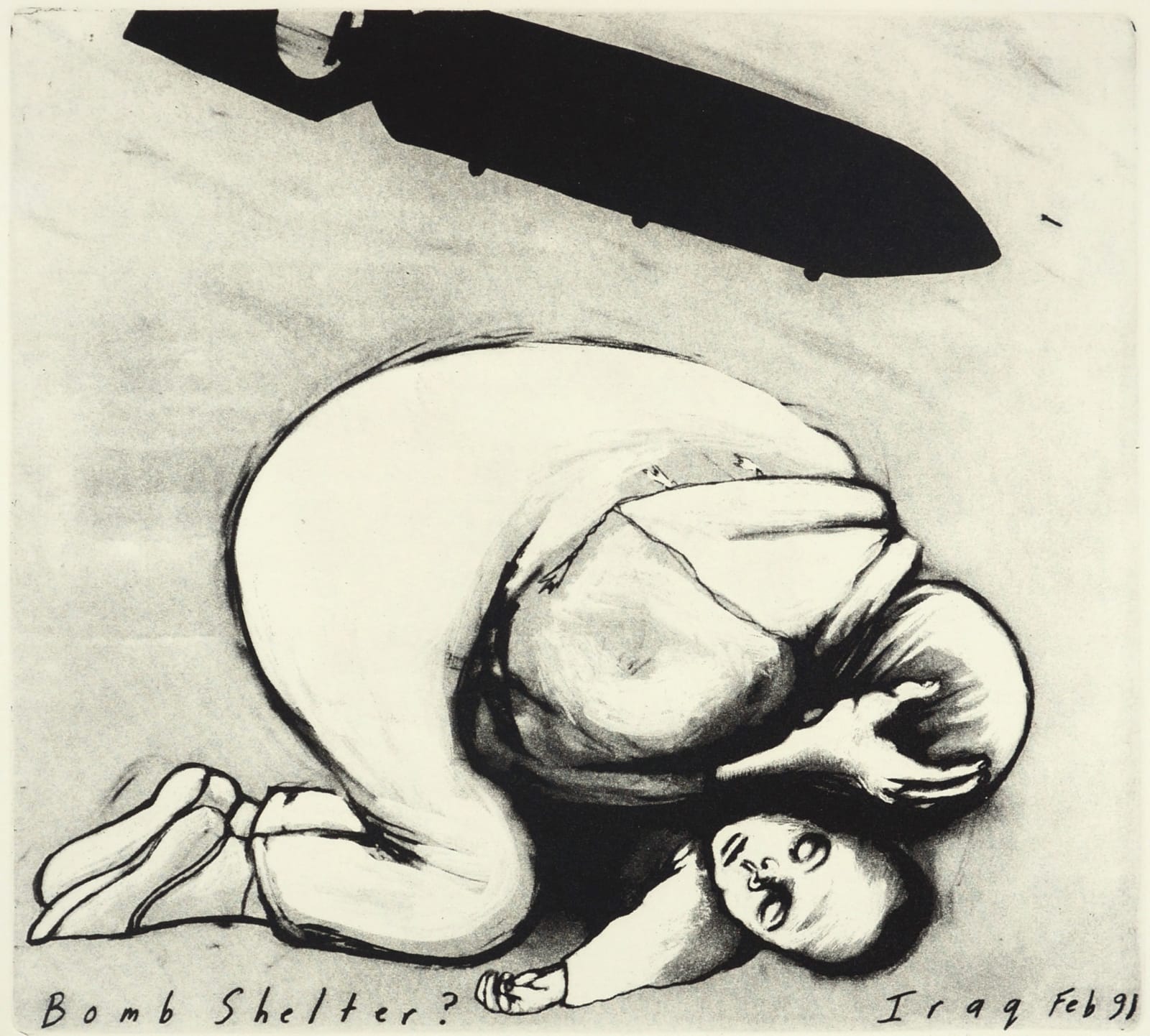Bomb Shelter, 1991
Etching on white heavyweight Rives paper
9 5/8 x 10 1/2 in (24.5 x 26.7 cm)
Edition of 292 plus 23 AP
© Sue Coe
Plate 24 of the series 'The Tragedy of War' A response to the weeks-long bombing of thousands of civilians during the Gulf War, Sue Coe's Bomb Shelter (1991) is marked...
Plate 24 of the series "The Tragedy of War"
A response to the weeks-long bombing of thousands of civilians during the Gulf War, Sue Coe's Bomb Shelter (1991) is marked by the influence of Expressionist artists including the pacifist Käthe Kollwitz. Among Coe's most iconic images, Bomb Shelter was recently included in MoMA PS1's large-scale exhibition Theater of Operations: The Gulf Wars 1991-2011. The New Yorker selected it as the lead image in their review of the show, in which Peter Schjeldahl praises Coe for capturing the lifelong sorrow and anger at human barbarities. Impressions of the photo-etching can be found in numerous university collections, including the Cushing/Whitney Medical Library at Yale University and the Tweed Museum at the University of Minnesota Duluth.
A response to the weeks-long bombing of thousands of civilians during the Gulf War, Sue Coe's Bomb Shelter (1991) is marked by the influence of Expressionist artists including the pacifist Käthe Kollwitz. Among Coe's most iconic images, Bomb Shelter was recently included in MoMA PS1's large-scale exhibition Theater of Operations: The Gulf Wars 1991-2011. The New Yorker selected it as the lead image in their review of the show, in which Peter Schjeldahl praises Coe for capturing the lifelong sorrow and anger at human barbarities. Impressions of the photo-etching can be found in numerous university collections, including the Cushing/Whitney Medical Library at Yale University and the Tweed Museum at the University of Minnesota Duluth.
1
of
2
